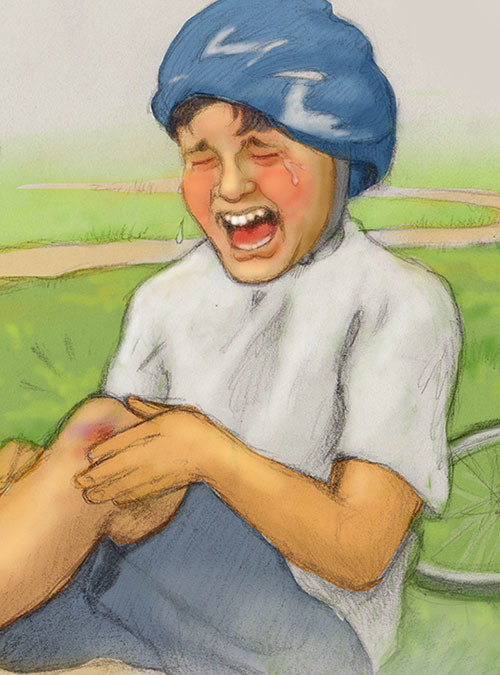
by Matt Philleo | Aug 29, 2015 | Christianity & Culture, Encouraging Thoughts, New Artwork, Personal Inspiring Stories
“Quit your crying!”
From the time we were little children, most of our parents told us not to cry when we were hurt. Even if our moms and dads were of the more nurturing nature, the message that is crying is for wimps was reinforced by our classmates, heroes on TV, and society’s expectation in general.
Of course, there is a time to stop crying, deal with your problem and move on, just as my wife and I tell our children.
But how many of us are holding back tears during a time when we should let them flow? We may experience an extreme trial such as a job loss, the severing of a close relationship, abuse toward us or those we love, accidents, bad news of a serious illness, or even a death–and because we were taught to hold back the tears, buck up, and save face–we stuff the feelings of grief and emotional trauma deep down where we think it’s hidden for good.
But it has a way of coming back.
In anger, frustration, bitterness, despondency–we often lash out toward those who are closest to us and could console us.
We hide behind a wall, a veneer of togetherness, when inside we are falling apart.
In this post, I am showing pages 7-10 of the children’s book I recently illustrated, “The Boy in a Tree,” by Pamela Boodle. (If you missed my first post introducing this book, you can check it out right here.)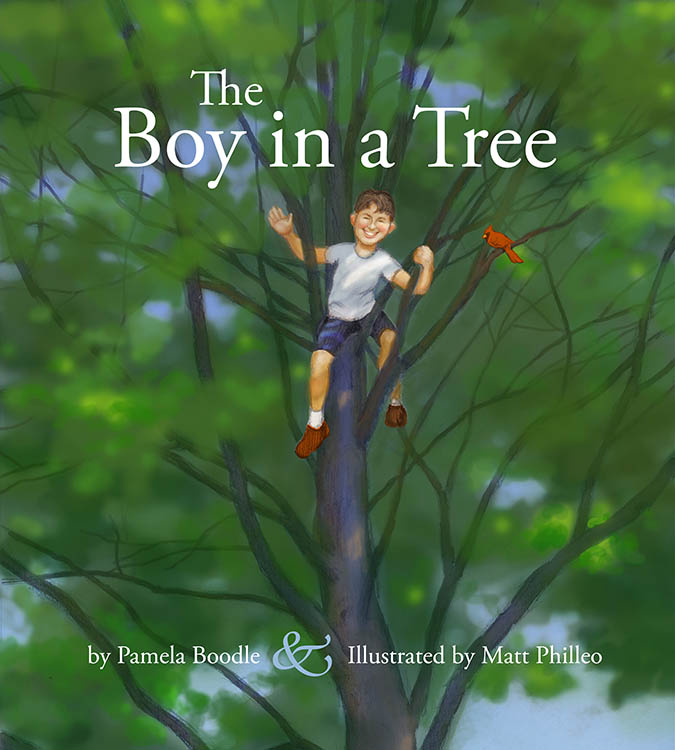
In the book, Nick, a cognitively impaired child, sees the world in a different way than most of us. Although he may not be able to do many of the things we take for granted… …His slower pace naturally allows him to notice the more important things in life that really matter.
And because he is not socially adept enough to hide behind a facade of respectability, he goes around living life by…just being himself. He doesn’t care how he looks to others. When he’s happy, he’s not too “cool” to show it. When he’s hurt, he doesn’t hold back the tears. And because of this, he is more emotionally healthy than many “typical” people.
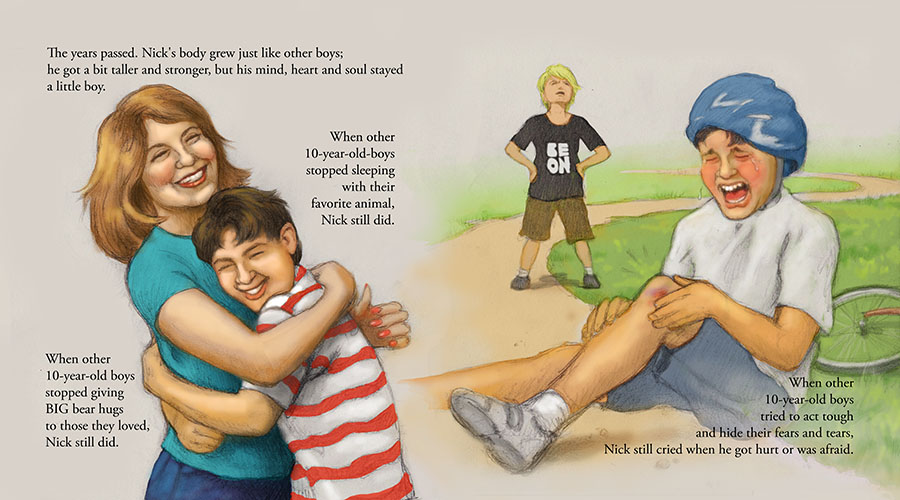
“The Boy in a Tree,” pages 7 & 8

“The Boy in a Tree,” pages 9 & 10
My dad died from brain cancer in 2010 at the age of 64. He and my mother divorced 11 years prior to that and I hadn’t been very close to him up until that point, especially since he moved to another state. But after learning of the tumor, my family and I visited him several times.
We saw the progression of the disease and how it reduced him from a confident, articulate, intellectual man to a blind, nearly helpless child, who needed assistance going to the bathroom. Unlike many people who are suffering from cancer, he was not bitter or despondent. He was very thankful whenever anybody did anything for him. All he wanted to do at the end was snuggle with his children. So, putting pride and awkwardness aside, I snuggled up next to my dad, and after a while he began to rub my belly. This seemed strange at first, but then I thought that this was maybe what he might have done when I was a young boy, and that somehow this might have brought him comfort, a feeling of closeness to his son.
I cried.
I prayed for him that God would heal him. I wanted him to stay alive so he could see and hold his grandchildren, and watch them grow up.
But about a month later, he died. When I got the news on the phone from his wife (who took care of him so selflessly, by the way) I didn’t feel anything. I expected to feel grief and wondered if something was wrong with me. Then I remembered how I cried so deeply during our last visit and, although I didn’t know it at the time, I realized I already grieved his death. I didn’t feel remorse. I was glad we drew close at the end and had no regrets.
About a year later, an older man in our church died. He was the head usher, a kind and gentle man that everybody seemed to love. At his funeral I grieved his death with many tears. Although I knew he was in heaven with the Lord, I missed his fellowship.
In Christian circles, we often chide people for grieving at a funeral.
Because we have such a great hope of seeing our departed loved ones in heaven, we religiously expect a stoic response–hypocritically renamed as “joy”–during a time when we should be the most vulnerable and open with our feelings.
But in the Bible, you will see a completely different response.
For example, when Lazarus died, what did Jesus do? He wept. (John 11:35) When Stephen, the first martyr of the Christian church died, what did people do? “Godly men buried Stephen and mourned deeply for him.” (Acts 8:2) When Tabitha died, what did the Christian church do? Did they say, “Hallelujah, Tabby’s risen to glory!” No! “All the widows stood around him (Peter), crying and showing him the robes and other clothing that Dorcas (Tabitha) had made while she was still with them.” (Acts 9:39)
Do you remember Samuel? Even if you don’t know the Bible very well, the name is so well known today because of a famous Jewish prophet who lived 3,000 years ago. I don’t think it is stretching the truth to say that there would be no Samuel unless a woman wasn’t afraid to cry. His mother, Hannah, couldn’t have any children. And in the Jewish culture, a woman being unable to have a child was the worst possible shame to endure. So what did Hannah do?
She cried out to God. Literally.
In the first book of Samuel, we read in verses 10-11:
“In her deep anguish Hannah prayed to the Lord, weeping bitterly. And she made a vow, saying, “Lord Almighty, if you will only look on your servant’s misery and remember me, and not forget your servant but give her a son, then I will give him to the Lord for all the days of his life…”
And then in verse 20, it tells us God answered her prayer.
“So in the course of time Hannah became pregnant and gave birth to a son. She named him Samuel, saying, “Because I asked the Lord for him.” Samuel turned out to be a God-following man, the prophet who would anoint King Saul and King David, one of Israel’s greatest prophets of all time. But his life came as a result of a broken person who wasn’t afraid to show her brokenness.
Hannah didn’t pretend to be happy or, on the flip side, resign herself to misery. She owned her pain, and cried out for relief.
And that’s exactly what she got.
When we grieve, it’s like showing our wound to someone who can help us, instead of letting it fester and get infected. If we are real with God, others, and ourself, and say “This is my pain, I’m not hiding it. God please help me through this! Deliver me!” Our loving Lord will come and salve our wound, and healing will come. In time, we will experience true joy–not a forced smile that looks like Joker’s face–but a true, abiding, pervasive joy that comes straight from God, settles down into the deepest part of our being, and then bubbles up and flows out of us like a fresh spring of water!
QUESTIONS TO PONDER:
1. Is there any pain from the past that you have hidden and could deal with now?
2. How can you show compassion to someone who is hurting and help ease their pain?
3. Do you know what it is like to feel true joy in during incredible sorrow or difficulties?
Share your thoughts!
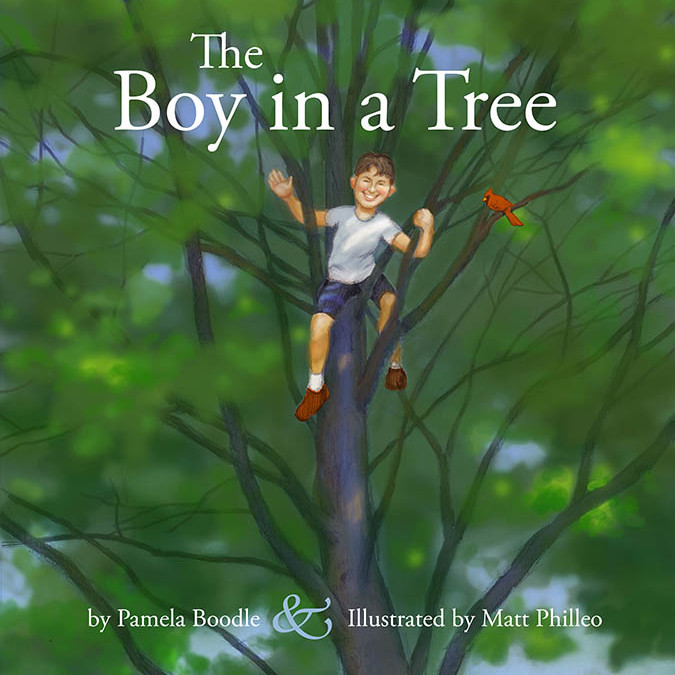
by Matt Philleo | Aug 21, 2015 | Encouraging Thoughts, New Artwork
Do you have a child with special needs or know someone who does? These days, it’s getting more and more common to see children with special needs anywhere you go. I speak from personal experience–my son is one of these wonderful children. They have a different way of looking at the world that can really help you to see life from a whole new perspective. If you’re close enough to them, you will learn things about yourself (especially your own shortcomings) that you never knew, and you will grow as a person just by being with and relating to them.Almost a year ago, I was asked to illustrate a children’s book called the “The Boy in a Tree,” written by my sister’s friend, Pamela Boodle. This book follows the life of a cognitively impaired child who has a fascination and relentless interest in climbing trees. And not just any tree. He searches for trees “with branches made just right for climbing and up, up, up he goes.” Over and above the grand height he ascends to in those towering limbs, his childlike outlook on life encourages us to take pleasure in the simple joys of life. During the last several months between other commissions, I worked on the illustrations for this book, starting with a freehand pencil sketch for the layouts, scanning the drawings into my computer, and then coloring them with Photoshop’s paint tools. This allowed me to keep the texture of the pencil and that hand-drawn look while having the flexibility to quickly change color and prepare a digital product ready to be printed.I met with the author today at a local coffee shop and showed her the illustrations I did for the book. While we were there, a family with two young children gazed intently at the color copies of the book illustrations. That’s a good sign! The parents said, “I think you have an audience already.”
It is my hope as the illustrator of this book, and certainly even more so the author’s…
…that the words and images will help children to see the people around them who may be different than them in a new light, and think about life’s purpose, what’s truly important, and what we are really here for. I think adults will get something out of it too. I know the author’s words really touched me as I read them, and that’s part of the reason why I agreed to do the illustrations for the text.Here are the first several pages of this 28 page picture book. It is not published yet, but if you have any interest in this book, please let me know and I will put you on a list so that when it does become available, you can be one of the first to get a copy!

“The Boy in a Tree” Intro Page 1
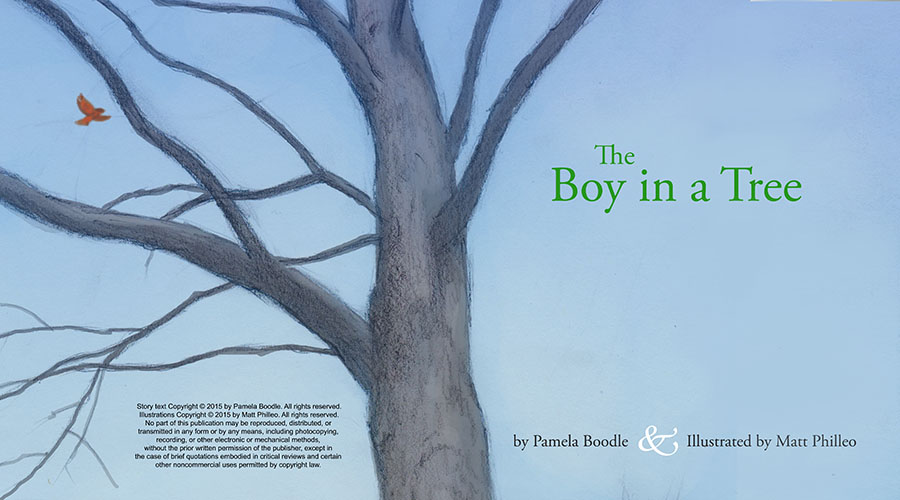
“The Boy in a Tree,” Intro Page 2
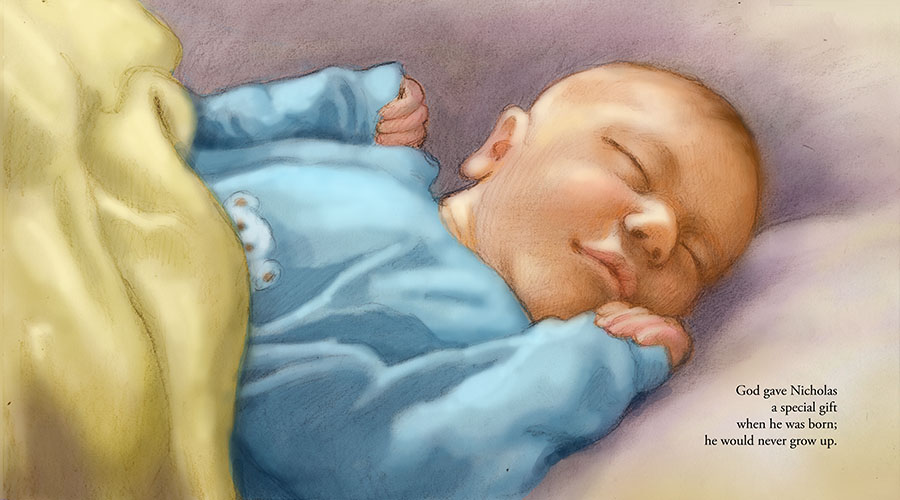
“The Boy in a Tree,” Page 1 & 2
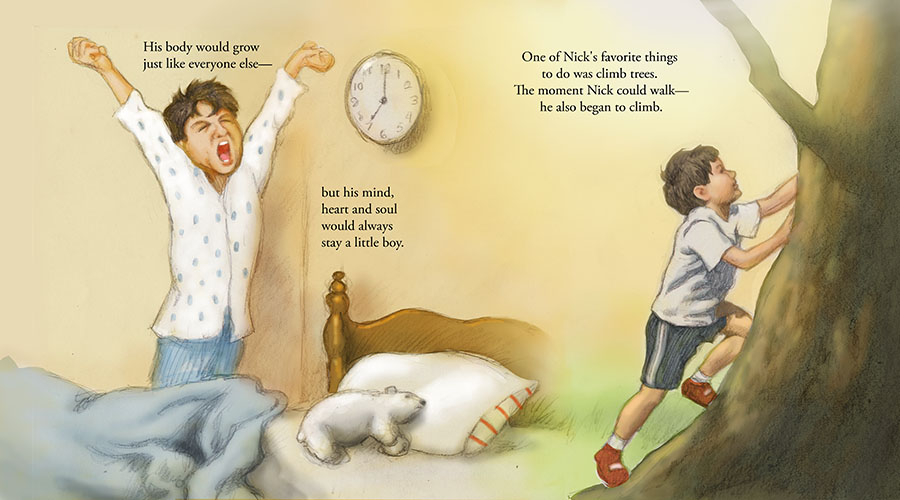
“The Boy in a Tree,” page 3 & 4
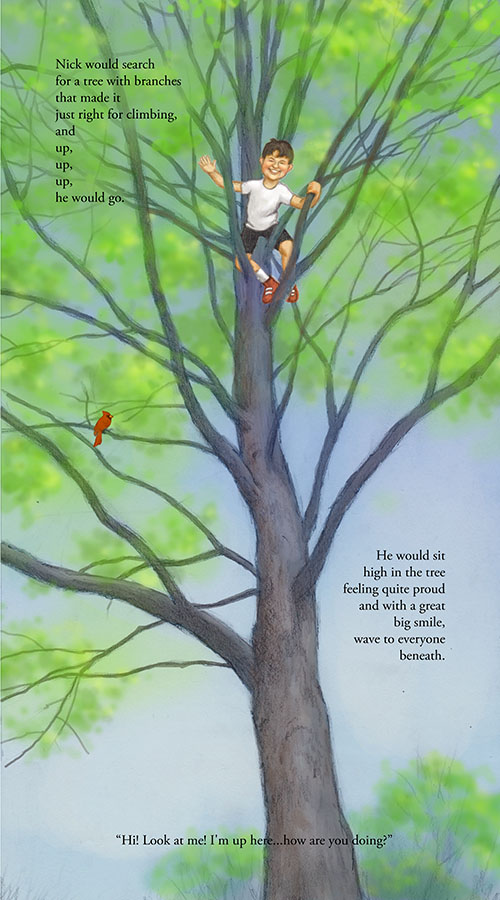
“The Boy in a Tree,” Page 5 & 6
That’s it for now. I will be including some more pages of the book in a future post, but the entire book will be available only in print. I hope these words and images have encouraged you today!
QUESTIONS TO PONDER:
1. How do people with special needs add value to our society?2. What specific things can you do to encourage a person with special needs?3. How can you, in a practical way, help or encourage a person who is caring for someone with special needs?











Recent Comments